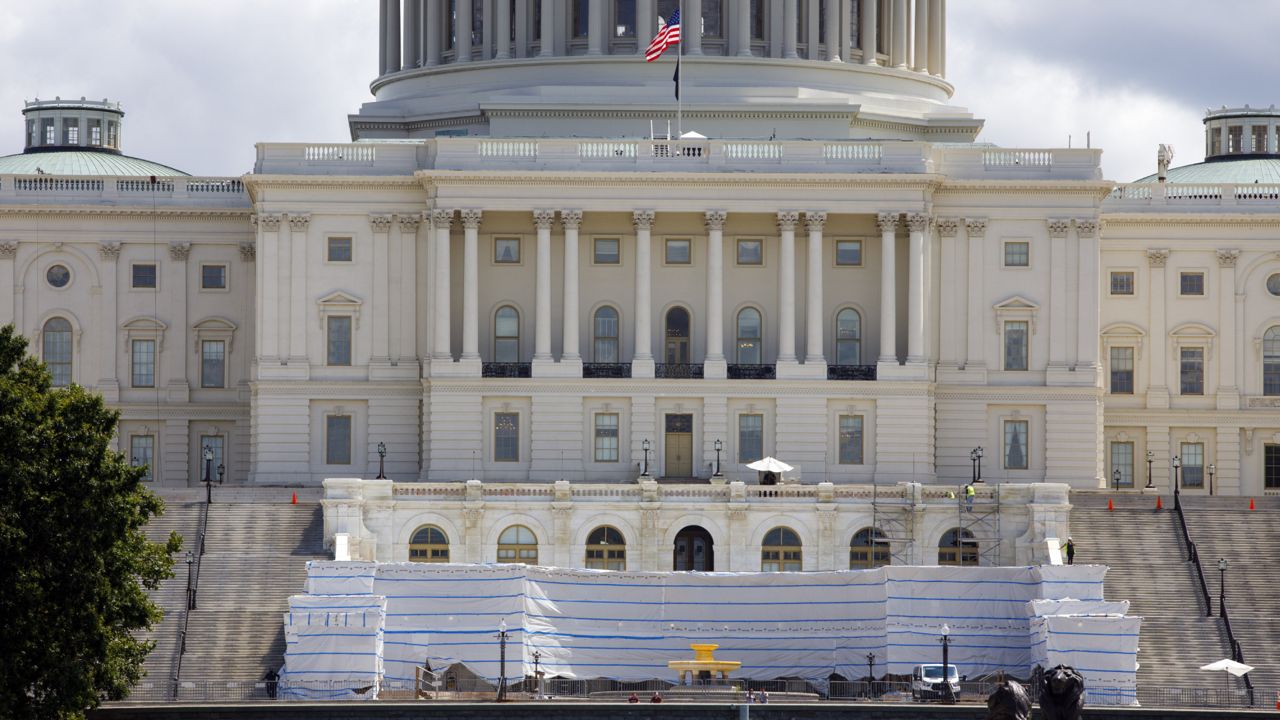WASHINGTON — While much of Washington is twisted in knots over the upcoming election, there’s another contingent already busy trying to figure out how to stage an inauguration for the to-be-determined next president during a pandemic.
Visitors to the U.S. Capitol and the White House can already see preparations underway for the Jan. 20 ceremony, a date set by the 20th Amendment to the Constitution, for whoever emerges as the winner. And low-flying helicopters are swooping around town as part of beefed-up security precautions.
Construction work is taking place with the mindset that it is easier to scale down, if the coronavirus makes that necessary, than to scale up, said Paige Waltz, a spokesperson for the Joint Congressional Committee on Inaugural Ceremonies.
The committee has voted to hold the inaugural ceremonies on the West Front of the Capitol, a tradition that began under Ronald Reagan. The Architect of the Capitol is busy constructing the inaugural platform from scratch. The platform traditionally holds more than 1,600 people, including the president and vice president, members of Congress, Supreme Court justices, and the outgoing president and vice president. Bleachers above the platform hold 1,000 additional people. The view from the West Front stretches the length of the National Mall, where Americans from around the country gather to catch a glimpse of history.
But in recognition that life has changed as a result of COVID-19, lawmakers are leaving all options on the table when it comes to safety precautions that could be taken. Will attendees be required to wear a mask? Or have their temperatures taken? Or social distance to the extent possible? Such precautions are being discussed, though no final determinations have been made with the ceremony still about three months away.
Waltz said the six-member committee overseeing the inaugural ceremonies is “committed to traditional, inclusive, and safe ceremonies and will continue to monitor the situation and provide information as it comes available.”
After the ceremony, the president and vice president will attend a luncheon in National Statuary Hall that includes speeches, gifts and toasts. The format used today began in 1953 when President Dwight D. Eisenhower and his wife and 50 other guests of the joint committee dined on creamed chicken, baked ham and potato puffs in the Old Senate Chamber.
Then it’s on to the parade and inaugural balls. A Presidential Inaugural Committee, a nonprofit representing the president-elect, will be organized following the Nov. 3 election. The committee oversees inaugural events held away from the U.S. Capitol.
In the meantime, the National Park Service is preparing for the construction of the reviewing and media stands used by the president-elect, his staff and family for the Presidential Inaugural Parade. It has closed a portion of Lafayette Park and the White House sidewalk to allow construction to begin.
The Nuclear Security Administration, part of the Energy Department, has begun conducting low-altitude helicopter flights around the capital during the daytime. The department said the aircraft contain state-of-the art radiation-sensing technology, and the flights are part of standard preparations to protect public safety.
For the Washington, D.C., metro area, the inauguration has traditionally provided an economic boost as visitors fill local hotels and restaurants. The 2021 inauguration comes at a difficult time for the district. Visitor spending was down 80%, or $6.9 billion, from March 8 to October 10, compared to the same period last year, according to Tourism Economics. That translated to $313 million in lost tax revenue for the District of Columbia.
Many of the region’s restaurants are shuttered, while hotel room demand was down nearly 5 million rooms, or 83%, from the same time period in 2019, according to STR Inc., which tracks the hotel industry.
“Traditionally, a second-term inauguration is not as big as the first, and if we have a new president taking office, numbers are typically larger,” said Elliott Ferguson, president and CEO of Destination DC, the district’s marketing organization. “However, visitation to Washington, D.C., during inauguration will depend on what people are able to do in the city based on COVID-19’s impact this winter, which remains to be seen.”
The Associated Press contributed to this report.



